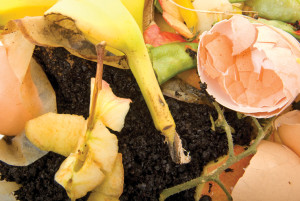Q. I recently read in a gardening book that coffee grounds should not be used in compost piles as they may be toxic to some plants. We have access to a lot of coffee grounds and I’d love to use them in the garden. Are they too acidic?
 A. Oregon State University Extension Service has found that coffee grounds are beneficial to plants. Cindy Wise, coordinator of the compost specialist program at the Lane County office says, “Coffee grounds by volume have about two percent nitrogen, and are a safe substitute from the pathogens concerns when using animal manure in a compost pile.” The grounds provide all the necessary bacteria needed to turn organic matter into compost. Contrary to popular belief, she also has found that coffee grounds are not acidic. Instead, the grounds are close to pH neutral, between 6.5 and 6.8 after brewing. The acidity in the beans is mostly water-soluble, so it leaches into the coffee we drink. Coffee grounds can be used in several different ways in a garden. Besides a compost pile, they’re used as a soil amendment and mixed into the native soil when planting new ornamentals. They’re used as a mulch when mixed with other materials and spread around landscape plants and in open areas.
A. Oregon State University Extension Service has found that coffee grounds are beneficial to plants. Cindy Wise, coordinator of the compost specialist program at the Lane County office says, “Coffee grounds by volume have about two percent nitrogen, and are a safe substitute from the pathogens concerns when using animal manure in a compost pile.” The grounds provide all the necessary bacteria needed to turn organic matter into compost. Contrary to popular belief, she also has found that coffee grounds are not acidic. Instead, the grounds are close to pH neutral, between 6.5 and 6.8 after brewing. The acidity in the beans is mostly water-soluble, so it leaches into the coffee we drink. Coffee grounds can be used in several different ways in a garden. Besides a compost pile, they’re used as a soil amendment and mixed into the native soil when planting new ornamentals. They’re used as a mulch when mixed with other materials and spread around landscape plants and in open areas.
Un-composted coffee grounds will use up the available nitrogen when encouraging the growth of microbes in the soil: hence, it’s important to feed plants often with Dr. Earth All Purpose fertilizer or similar product while the microbes are breaking down the grounds. This will prevent the plants from turning yellow from a nitrogen deficiency. Coffee grounds can be added to both active and passive compost piles. In an active compost pile, one that is turned often and creates heat, layering one part dry leaves to one part fresh grass clippings to one part coffee grounds, by volume is recommended. When turned weekly, the compost will be ready in three to six months. You can add coffee grounds, to an existing pile but be sure add an equal amount of high carbon (brown) source, such as dry leaves, straw or strip of paper to balance right. We’re looking a fifty-fifty ratio between the green and brown components. Oregon State University Extension has had some issues with poor seed germination when using in un-composted coffee grounds in the seed trays or flats so it may be wise to avoid them in this occurrence.
Coffee grounds are readily available and you should make prior arrangements with a neighborhood coffee shop to collect grounds. I’d provide them with a clean five-gallon bucket with a lid. Label the bucket with your name and telephone number on the bucket and lid and then pick it up at the shop’s convenience. Coffee grounds may be stored in large plastic bags for future use but only if they’re to use in an active compost pile. They may develop a mold that disappears in the composting process. And yes, the paper coffee filters may be composted with the grounds.
Buzz Bertolero is Executive Vice President of Navlet’s Garden Centers and a California Certified Nursery Professional. His web address is www.dirtgardener.com and you can send questions by email at dirtgarden@aol.com or to 360 Civic Drive Ste. ‘D’, Pleasant Hill, Calif. 94523 and on Facebook at Facebook.com/Buzz.Bertolero
Leave a Reply